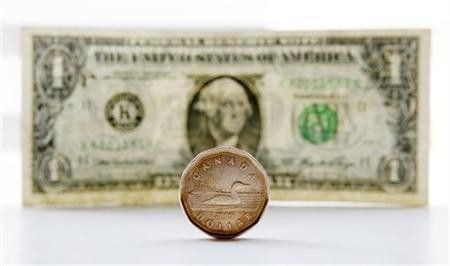Dollar pushed higher by inflation data

The dollar firmed to a session high against the U.S. currency on Friday after data showed Canada's October inflation rate came in higher than forecast, curbing market bets on an interest rate cut.
The consumer price index rose 2.9 percent in October from a year earlier, easing from 3.2 percent in September as gasoline prices rose at a slower year-on-year pace.
The core inflation rate, closely watched by the central bank because it excludes some volatile items, eased to 2.1 percent from 2.2 percent in the previous month. Markets had forecast, on average, slightly lower rates for total CPI and core CPI of 2.8 percent and 1.9 percent, respectively.
The gains were fairly broadbased, said Camilla Sutton, chief currency strategist at Scotia Capital.
That limits the ability for the Bank of Canada to turn too dovish with still rising inflation in Canada, and it's positive for the Canadian dollar.
Higher interest rates tend to support a country's currency by attracting capital flows.
Analysts surveyed by Reuters expect the next Bank of Canada interest rate move to be a hike, some time in mid to late-2012 or early 2013.
But markets have been pricing in a rate cut for some time. Overnight index swaps, which trade based on expectations for the central bank's key policy rate, showed that traders scaled back bets on a rate cut for this year or next after the inflation data.
At 7:47 a.m. (1247 GMT), the Canadian dollar touched a high of C$1.0200 against the greenback, or 98.04 U.S. cents, before retreating to C$1.0208. The currency ended Thursday at C$1.0283 versus the greenback, or 97.25 U.S. cents.
Mazen Issa, Canada macro strategist at TD Securities, said while the Canadian dollar got a boost on the inflation figures, he expected most of the move would probably unwind by the end of the day.
I don't think it will be maintained, particularly as we're still so early in the day so I think they'll realize that the Bank of Canada is still not going to be moving for a very long time, he said.
The focus outside Canada revolved around the debt crisis in Europe.
The euro rose on Friday as pressure on Spanish and Italian bonds eased after the European Central Bank stepped in to stabilize the market, but fears both countries' borrowing costs are at unsustainable levels sent European stocks to new five-week lows.
Canadian government bond prices were lower across curve and mostly underperformed U.S. Treasuries.
The yield on the two-year bond, which is especially sensitive to Bank of Canada interest rate moves, rose to 0.93 percent from 0.913 percent just before the data.
The 10-year Canadian government bond fell 50 Canadian cents to yield 2.157 percent.
© Copyright Thomson Reuters {{Year}}. All rights reserved.





















